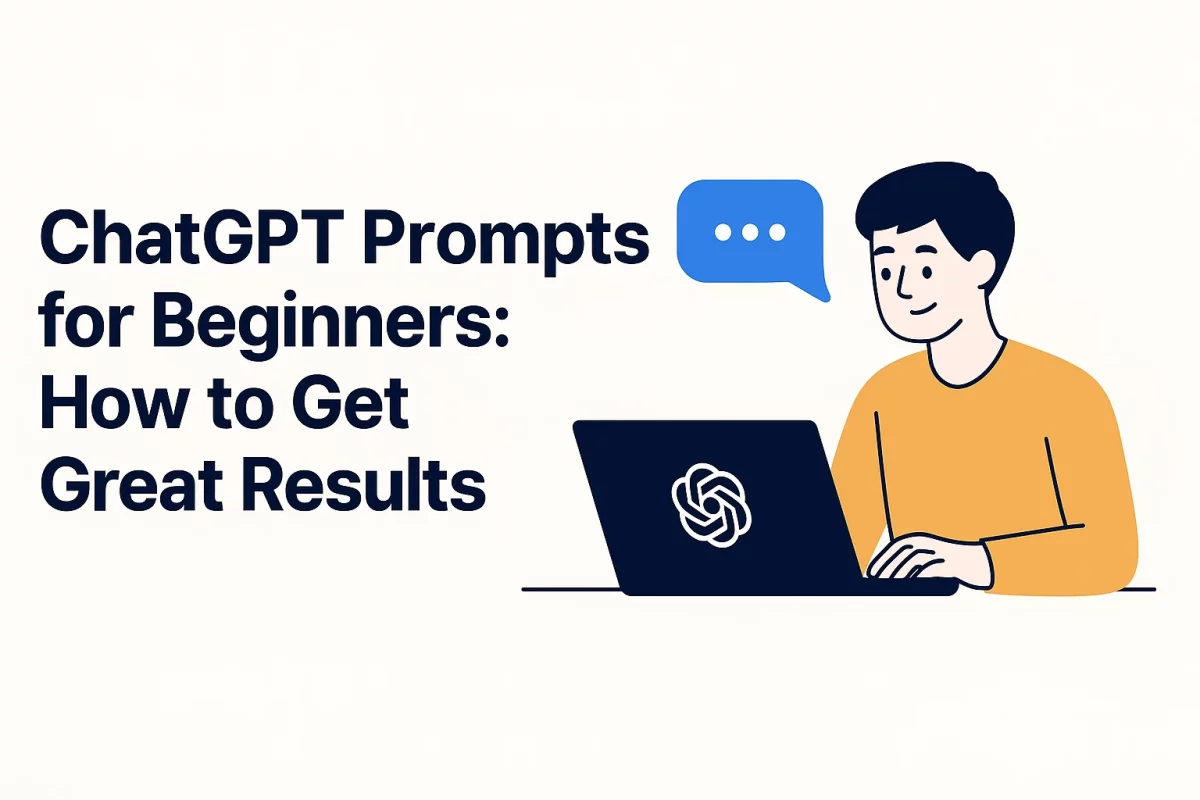ChatGPT Prompts for Beginners: How to Get Great Results from Day One
If you’re new to ChatGPT, you’ve probably experienced that mix of excitement and confusion after typing your first prompt. Sometimes it gives you exactly what you need. Other times, it’s not even close.
The good news? Learning how to write effective prompts is a skill you can master quickly. In this guide, we’ll cover the basics of prompting, provide practical examples, and share proven strategies to help you get the most out of ChatGPT right from the start.
Whether you want to write better blog posts, brainstorm creative ideas, or solve technical problems, mastering a few simple prompting techniques will make a huge difference.
What Is a Prompt?
A prompt is the instruction or question you give to ChatGPT to guide its response. Think of it like giving directions, the clearer you are, the more likely you are to get exactly where you want to go.
For example:
Basic Prompt:
Write me a poem.
Better Prompt:
You are a children’s author. Write a 12-line rhyming poem about a brave mouse who sails across the ocean, using playful and imaginative language.
The difference is specificity. The second prompt gives role, topic, tone, and style, which allows ChatGPT to deliver a much more targeted result.
Prompt Comparison: What Works Best?
- Bad Prompt: Write a blog post about AI.
- Better Prompt: You are a productivity coach. Write a blog post explaining 3 ways freelancers can use AI to automate tasks.
See the difference? This post will help you do more of that, starting now.
The Three Keys to Effective Prompts
If you remember nothing else, remember these three principles:
- Be Specific - Provide details about the role, audience, tone, and format you want.
- Add Context - Include background info or examples to guide the AI.
- Set Constraints - Define length, structure, or style requirements.
The more complete your instructions, the better the output.
How to Structure ChatGPT Prompts for Beginners
If you’re feeling stuck, try these beginner-friendly formulas to jump-start your creativity.
1. Role + Task + Detail
You are a travel blogger. Write a 500-word blog post about hidden coffee shops in Paris, including at least three recommendations.
2. Problem + Goal + Context
I’m a small business owner struggling to increase Instagram engagement. Give me five post ideas with captions and hashtags that appeal to a millennial audience.
3. Instruction + Example + Format
Write a professional email requesting a meeting. Here’s an example of my tone: [insert example]. Use three short paragraphs.
Using Follow-Up Prompts
Your first prompt doesn’t have to be your last. One of ChatGPT’s strengths is building on what you’ve already generated.
Example:
- Initial Prompt: Write a 300-word product description for a wireless headset.
- Follow-Up Prompt: Make it more persuasive by adding customer testimonials and highlighting battery life.
This back-and-forth process is called iterative prompting, and it’s one of the fastest ways to improve your results.
Common Beginner Mistakes to Avoid
- Being too vague: “Write me something about marketing” will get you a generic response.
- Forgetting your audience: Always specify who you’re writing for.
- Not reviewing output critically: AI is a tool, not a replacement for your judgment.
Helpful Resources for Learning More
Looking for more help with prompt writing and tools start here:
- The Ultimate Guide to Prompt Engineering - GetPromptings playbook
- Free AI Prompt Pack - GetPromptings starter prompt pack
- OpenAI’s ChatGPT Guide - Official documentation and tips.
- Claude by Anthropic - Another powerful AI tool for comparison.
- Google Gemini - Useful for cross-model testing and experimentation.
Frequently Asked Questions
Q1: How do I start writing ChatGPT prompts as a beginner?
A: Start by giving the AI a clear role, task, and goal. Use specific instructions and iterate with follow-up prompts to refine results.
Q2: What is the best format for a ChatGPT prompt?
A: A proven format is: Role + Task + Detail. For example: “You are a marketer. Write a tweet thread about AI tools using a casual tone.”
Final Thoughts
If you’re just starting out with ChatGPT, the key is to experiment and refine. Use clear, detailed prompts. Give the model a role, an audience, and a format. Then, iterate with follow-up questions until you get exactly what you need.
The more you practice, the faster you’ll develop an instinct for crafting prompts that produce outstanding results.
If you want to level up even further, check out our guide on Best Prompt Engineering Tools and learn how to store, organize, and automate your best-performing prompts for consistent success.
Ready to Prompt Smarter?
Get our free AI Prompt Pack with ready-made templates, beginner-friendly guides, and tools to level up your results.
